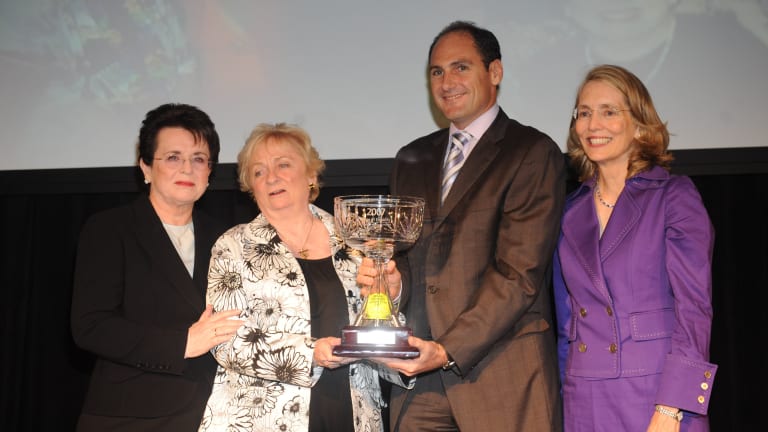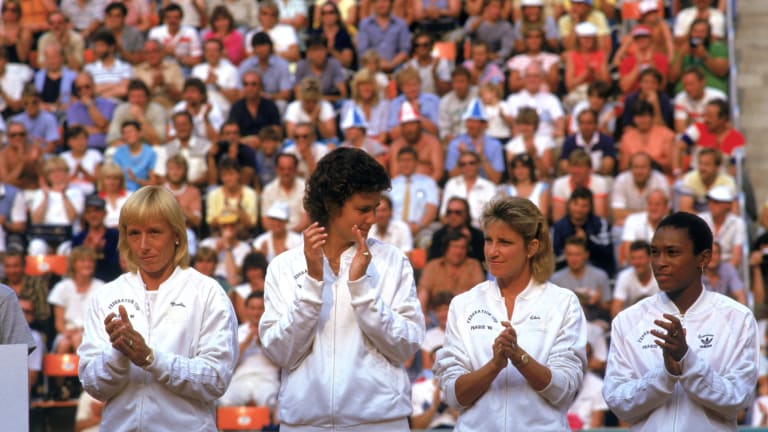Editor's Note: Jane Brown Grimes, a transformative tennis industry leader who held roles as President and CEO of the International Tennis Hall of Fame, Managing Director of the Women’s Professional Tennis Council (precursor to today’s WTA), and Chairman of the Board, President, and CEO of the United States Tennis Association, died at home in New York City on November 2. Brown Grimes, a lifelong New Yorker, was 80 years old.
Where Are They Now?
Jane Brown Grimes: The Most Scholarly Hall of Famer
By Jun 17, 2021Where Are They Now?
The Three Gorans: Ivanisevic to be enshrined in Tennis Hall of Fame
By Jul 14, 2021Where Are They Now?
At 74, Life is Busy and Complete for Stan Smith
By Jun 21, 2021Where Are They Now?
The Craftsman: Butch Buchholz and the rippling effects of his Miami Open vision
By Jun 16, 2021Where Are They Now?
The Second Act: Gigi Fernandez's fascinating post-tour career
By Jun 15, 2021Stat of the Day
Karolina Muchova has now had wins over every Top 10 ranking in her career
By Jan 08, 2026United Cup
Stan Wawrinka plans "Belinda’s World" t-shirt for United Cup semis, awaits AO wild card fate
By Jan 08, 2026Social
The now and the next: Aryna Sabalenka, Emerson Jones land January magazine covers
By Jan 07, 2026The Big T
The Big T Podcast, Episode 1: Inside the Alcaraz/Ferrero split
By Jan 07, 2026United Cup
United Cup, Day 7 Preview: Can Belgium pull off another upset vs. the Czechs?
By Jan 07, 2026Jane Brown Grimes: The Most Scholarly Hall of Famer
Brown has channeled her years in tennis into a fruitful academic path, and is currently in the midst of writing a PhD thesis on the history of women's game.
Published Jun 17, 2021
Advertising

GettyImages-82539130
Advertising
Advertising

Brown Grimes' Masters thesis centers on Martina Navratilova's return to communist Czechoslovakia in 1986 (Getty Images).
© Getty Images
Advertising
Advertising
![Brown Grimes' PhD thesis ends at the 2007 Wimbledon Championships, where "Venus Williams [was instrumental] in getting equal prize money for the women so all of the Grand Slam tournaments finally had parity" (Getty Images).](https://images.tennis.com/image/private/t_16-9_768/f_auto/tenniscom-prd/c3smuxk9dyal9rdekgzb.jpg)
Brown Grimes' PhD thesis ends at the 2007 Wimbledon Championships, where "Venus Williams [was instrumental] in getting equal prize money for the women so all of the Grand Slam tournaments finally had parity" (Getty Images).
© 2007 Getty Images